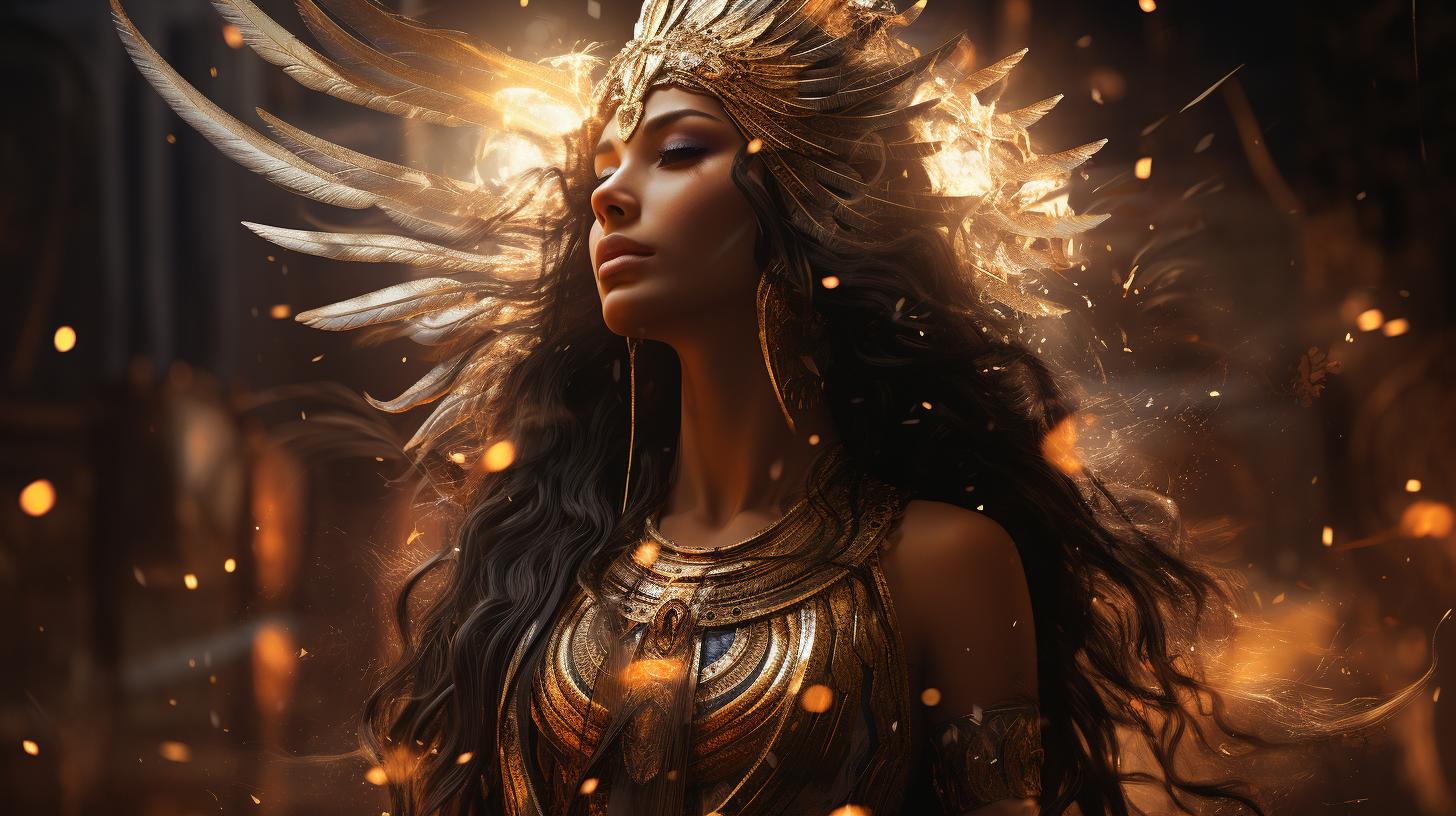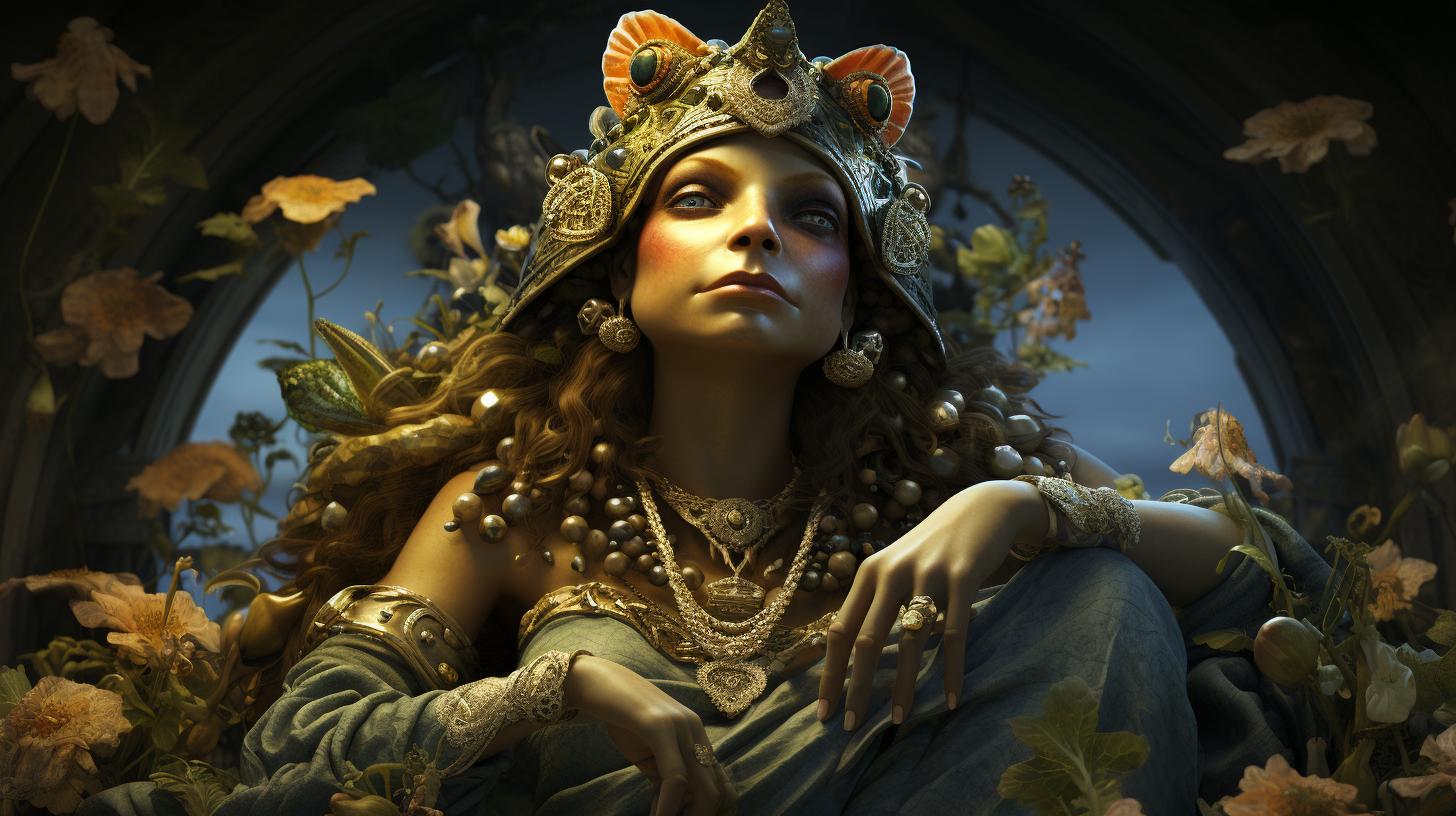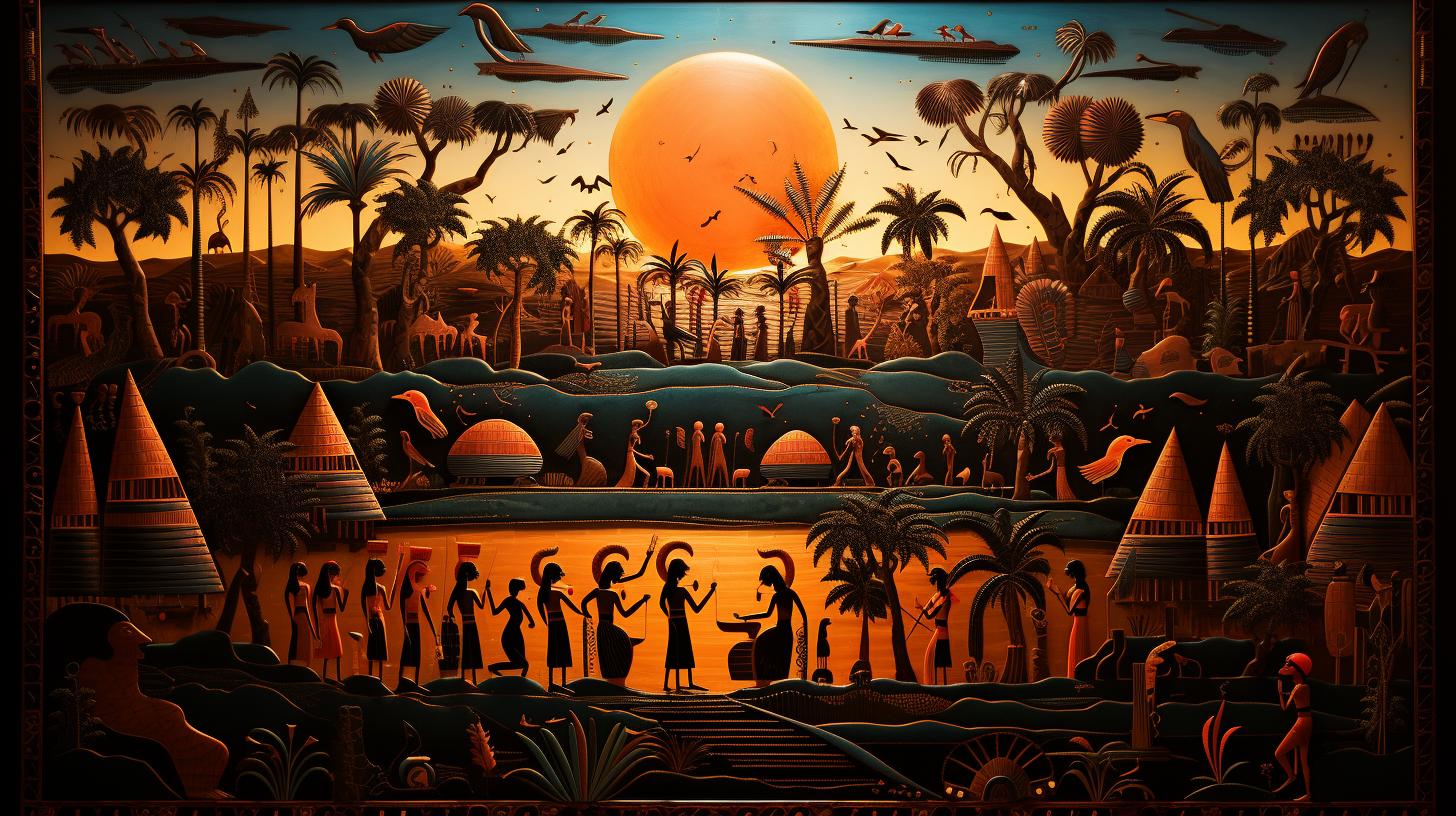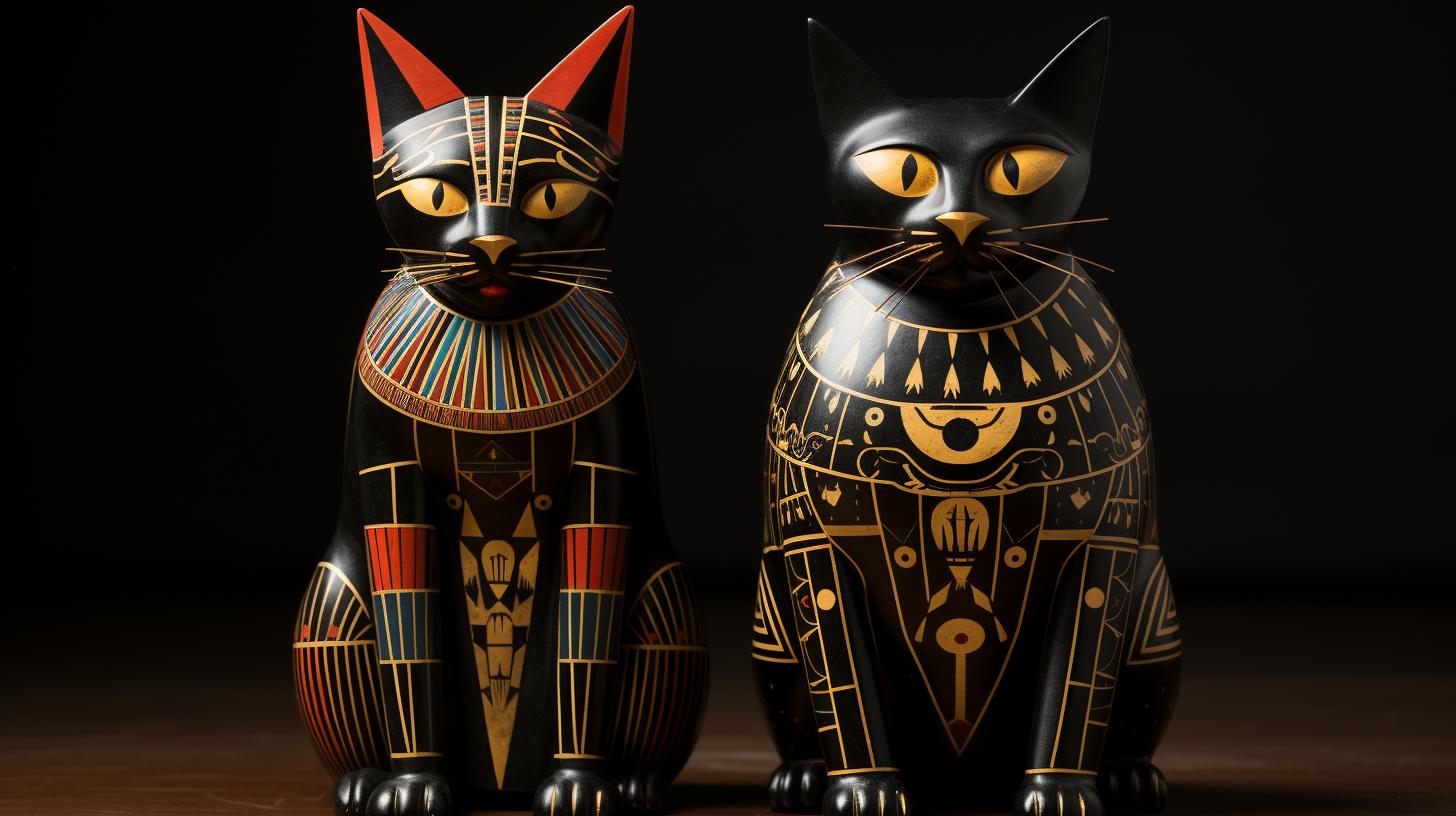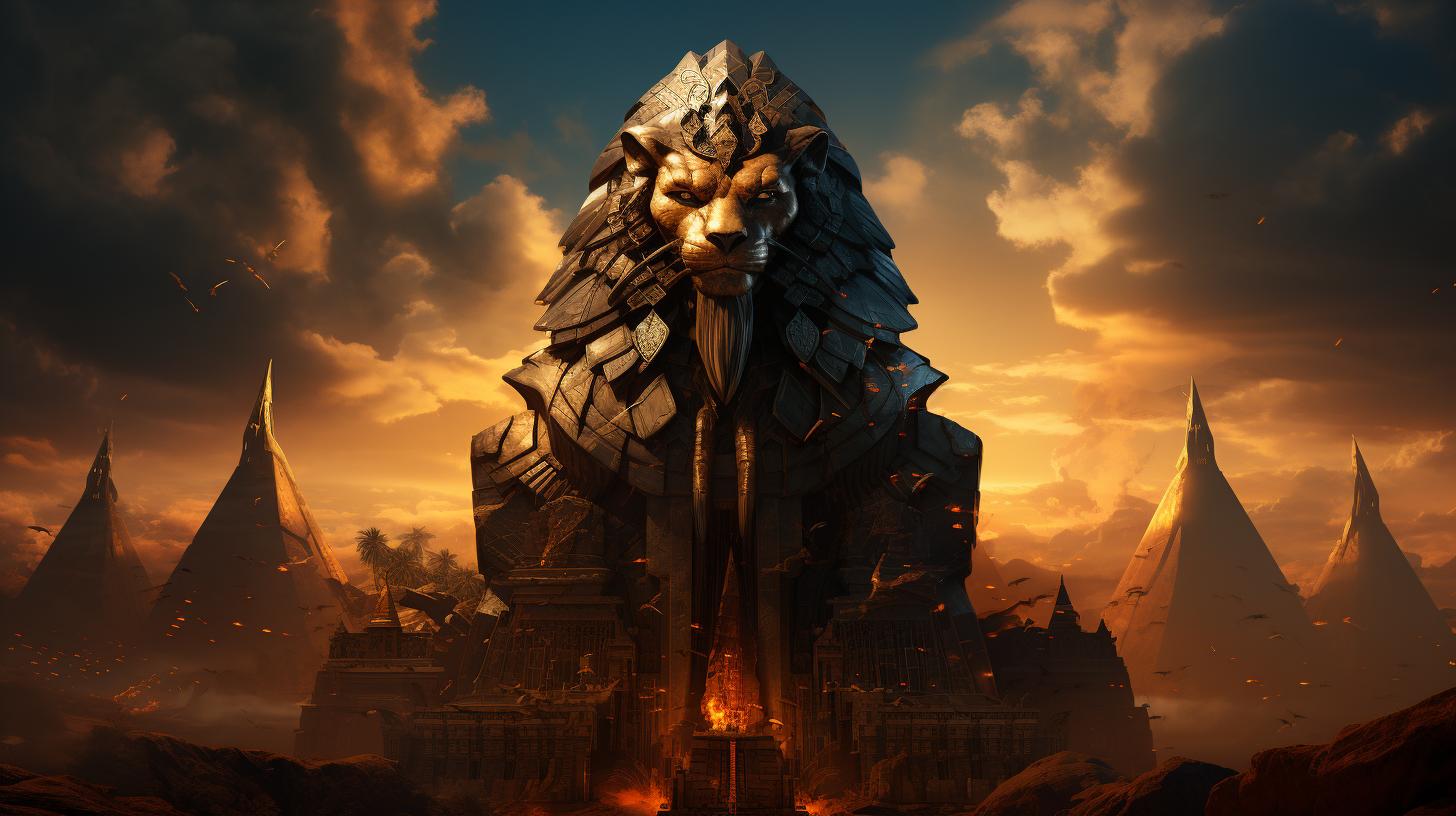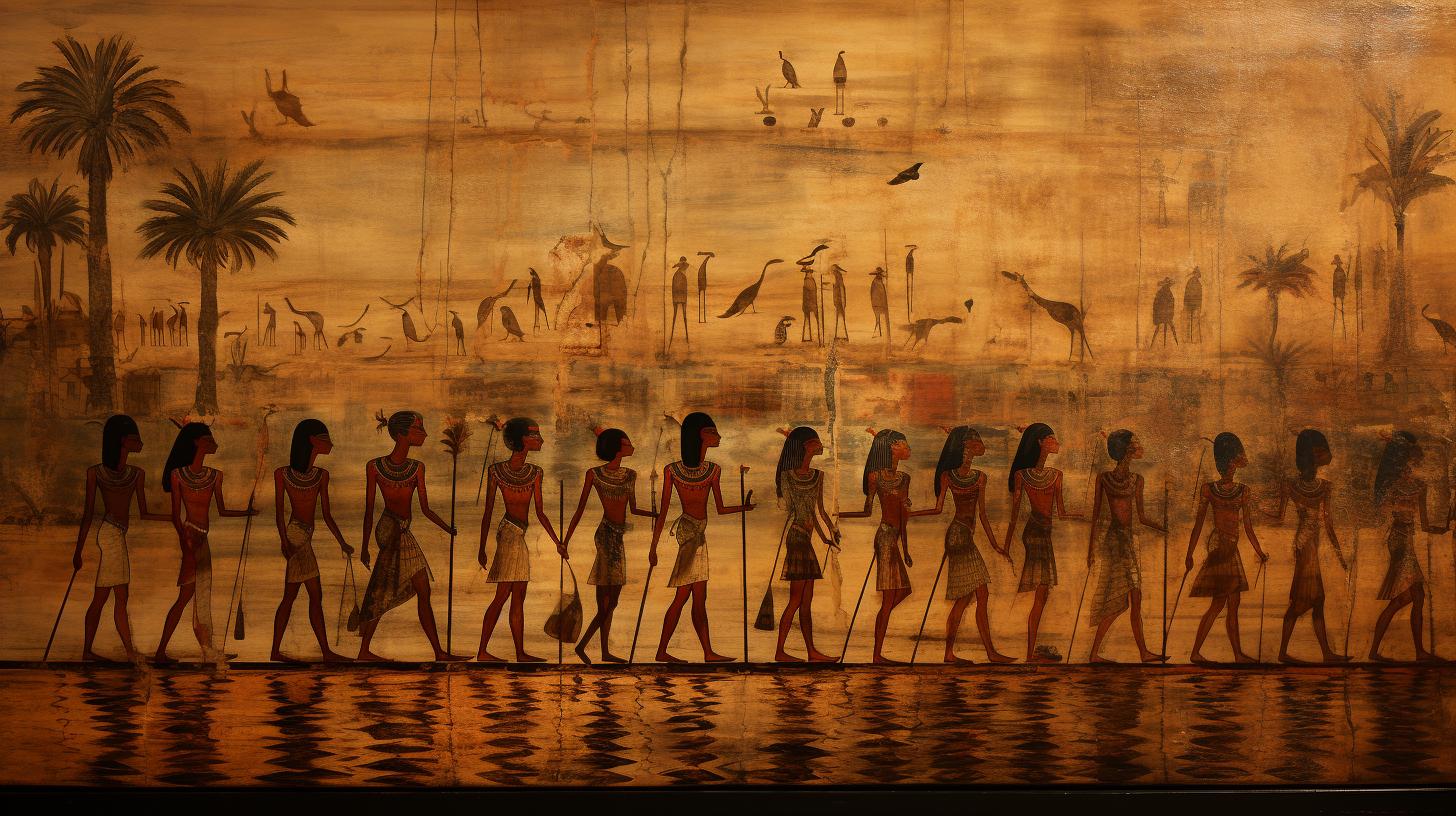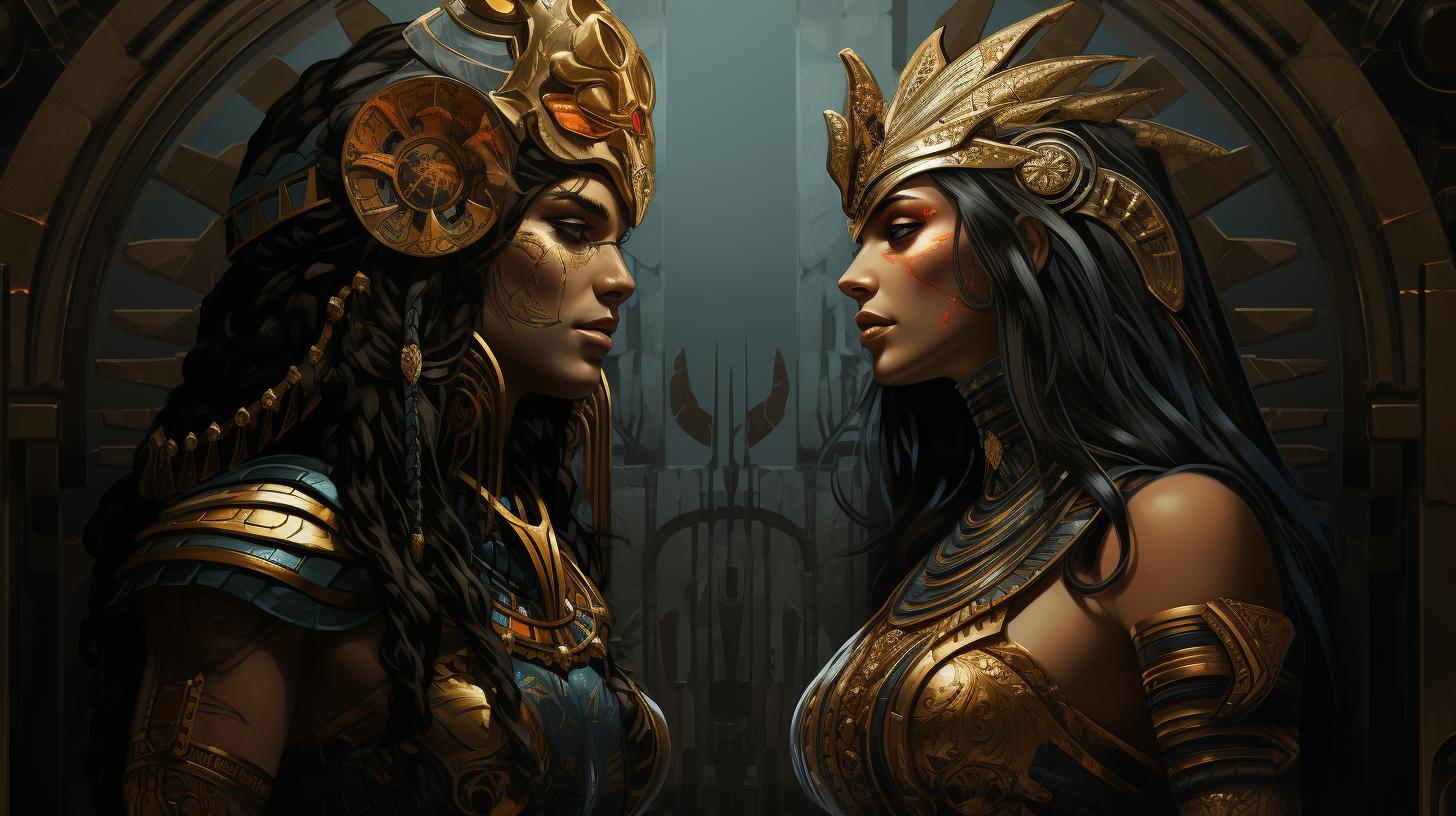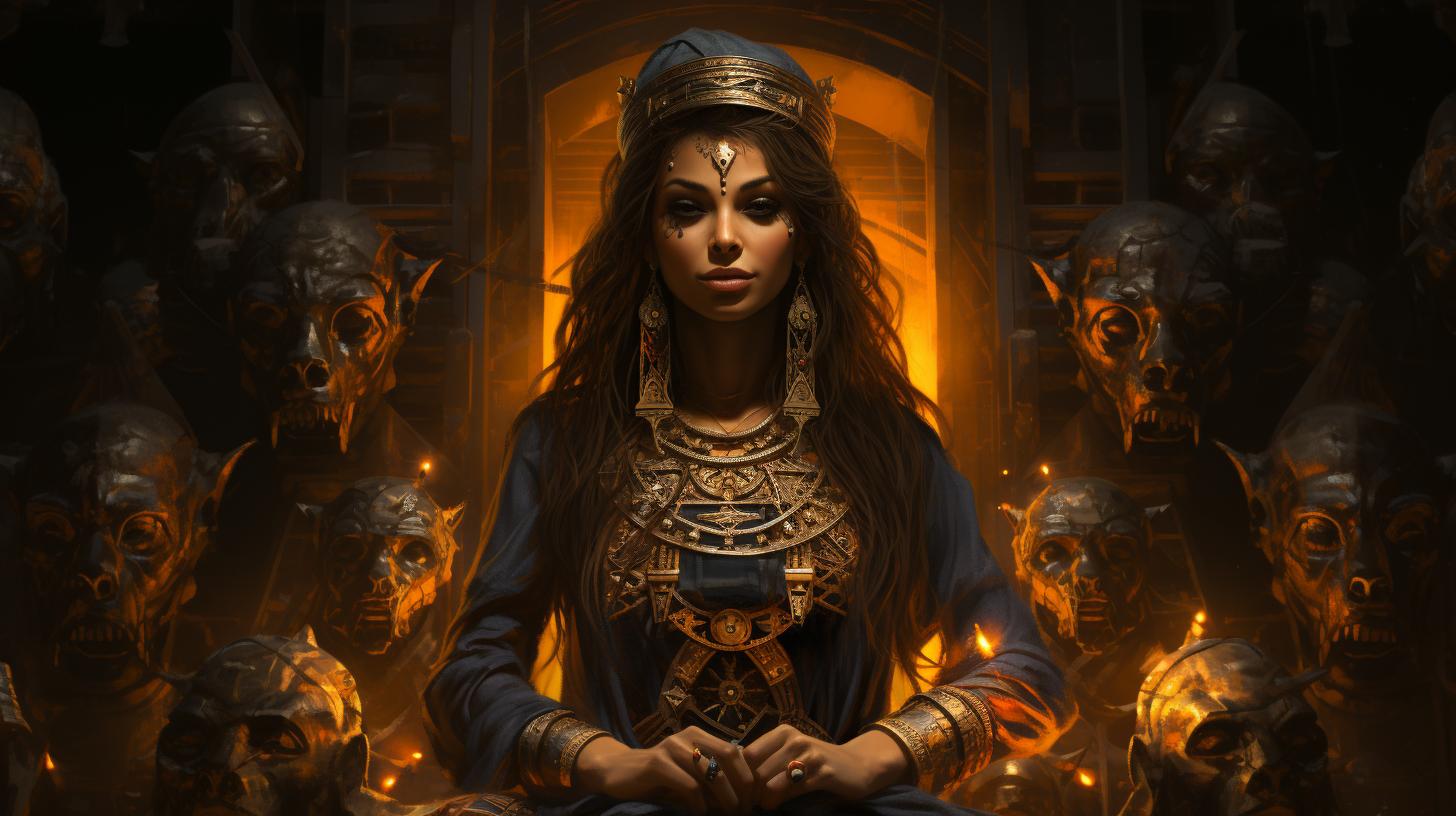Ancient Egyptian Goddess Maat: The Essence of Truth and Balance
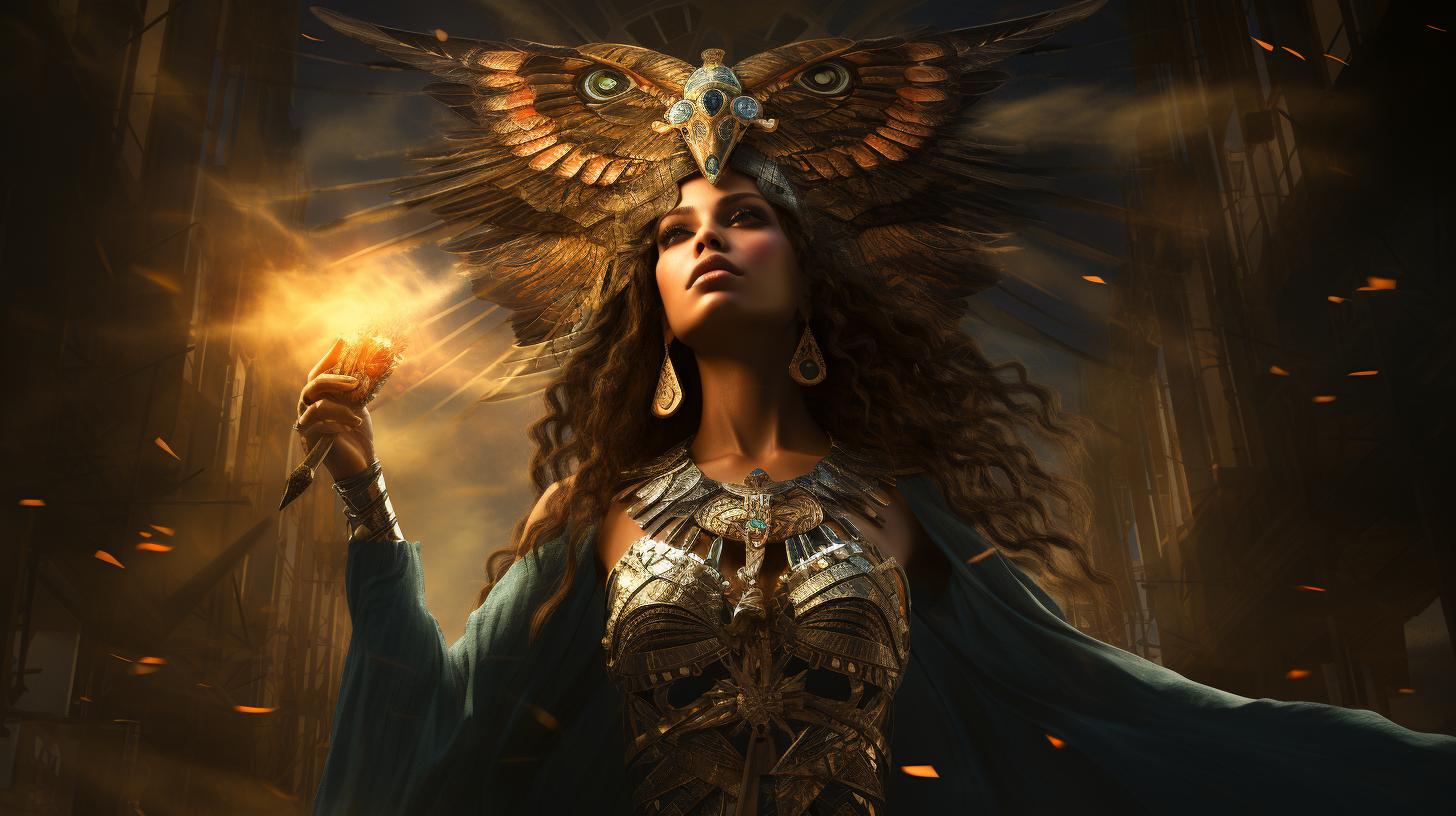
Ancient Egyptian Goddess Maat played a significant role in the civilization of ancient Egypt. Representing truth, justice, and balance, Maat held a pivotal position in maintaining order and harmony in the universe.
Her influence extended to the afterlife, where she played a crucial role in the judgment of the deceased. Maat’s significance permeated various aspects of Egyptian society, from moral values to seasonal regulation.
Additionally, representations of Maat can be found in temples and reliefs. This article explores Maat’s origins, her role in Egyptian society, and her enduring legacy in ancient Egyptian religion.
The Origins of Maat in Ancient Egypt
Maat, the ancient Egyptian goddess, holds a significant place in the rich tapestry of Egyptian mythology and belief systems.
Her origins can be traced back to the earliest times of Egyptian civilization. Maat’s essence embodies truth, justice, and balance in the cosmic order.
In Egyptian cosmology, Maat was believed to have been born when Ra, the sun god, emerged from the primordial waters of Nun.
As the daughter of Ra and the wife of Thoth, the god of wisdom, she played an integral role in maintaining harmony and balance in the universe.
The concept of Maat was deeply intertwined with the Egyptian understanding of morality and justice.
Ancient Egyptians viewed the world as an ordered system, and they believed that upholding Maat’s principles was fundamental to maintaining social and cosmic harmony.
The worship of Maat can be traced back to the Early Dynastic Period of Egypt, around 3100 BCE.
From the very beginning, she represented the ideals that Egyptians held dear, including righteousness, integrity, and moral conduct.
- Maat’s Ideals:
- Truth
- Justice
- Equilibrium
- Harmony
Maat’s depiction in ancient Egyptian art often showcased her holding a feather, symbolizing the weight of truth and righteousness.
This imagery reinforced the notion that the world revolved around Maat’s principles, and deviation from them would disrupt the natural order.
As the embodiment of truth and justice, Maat’s influence extended beyond the mortal realm and into the afterlife.
In the realm of the dead, souls underwent the judgment ceremony in the Hall of Maat. Here, the hearts of the deceased were weighed against the feather of Maat to determine their worthiness for eternal life.
Maat’s profound impact on ancient Egyptian society and culture cannot be overstated. Her principles guided the conduct of both individuals and institutions, weaving a moral fabric that formed the basis of Egyptian civilization.
Through millennia of Egyptian history, the worship and reverence for Maat persisted. Her worship continued throughout the Old Kingdom, Middle Kingdom, and New Kingdom, adapting to the changing political and religious landscapes of Egypt.
The legacy of Maat endures in ancient Egyptian religion and symbolism. Her role in maintaining order and balance in the world reflects the profound insights of the ancient Egyptians into the fundamental workings of the universe.
Exploring the origins of Maat offers a glimpse into the intricate belief systems that shaped one of the most fascinating civilizations in history. Understanding the core principles she represented allows us to delve deeper into the complexities of ancient Egyptian thought and culture.
Maat as the Goddess of Truth and Justice
The ancient Egyptian goddess Maat held a prominent position in their religion, embodying the principles of truth and justice. Her significance extended beyond mere symbolism, as her presence influenced various aspects of Egyptian society and belief system.
Let us delve into the representations of Maat in ancient Egyptian art, her role in maintaining order and balance, and her relationship with other deities.
Representations of Maat in Ancient Egyptian Art
Ancient Egyptian art often depicted Maat as a regal figure, either seated or standing, with a distinctive feature: a feather of an ostrich adorning her head.
This feather symbolized the concept of truth and served as a defining element in her representations. Artists imbued these depictions with great attention to detail, emphasizing her significance and divine nature.
Maat’s Role in Maintaining Order and Balance
Maat played a pivotal role in upholding the cosmic order, ensuring that everything remained in balance. Ancient Egyptians believed that her influence permeated every aspect of life, from the behavior of mortals to the actions of gods.
The concept of ma’at, represented by Maat herself, lay at the core of their moral and ethical standards, guiding individuals towards a harmonious existence in the world.
Maat’s Relationship with Other Deities
Within the intricate pantheon of Egyptian gods and goddesses, Maat held a special connection with several deities.
As the daughter of Ra and the spouse of Thoth, the god of wisdom, she maintained important relationships within the divine realm. Her association with Thoth, in particular, signified the harmonious interplay between wisdom and justice in the cosmic order.
These representations, Maat’s role in maintaining balance, and her relationships with other deities shed light on her paramount importance in ancient Egyptian society and religion.
Maat and the Afterlife in Ancient Egypt
Maat held significant importance in the journey to the afterlife for the ancient Egyptians.
Understanding Maat’s role in the judgment of the deceased, the symbolism in the weighing of the heart ceremony, and her connection to the Duat provides insight into the beliefs and rituals surrounding the afterlife in ancient Egypt.
The Importance of Maat in the Judgment of the Deceased
In ancient Egyptian beliefs, all deceased individuals were subject to judgment in the Hall of Maat. Here, their hearts were weighed against the feather of Maat, symbolizing truth and justice. The judgment was presided over by the god Osiris, while Maat played a crucial role in determining whether the deceased would be granted eternal life or face oblivion.
Those whose hearts balanced with the feather of Maat were deemed righteous and were allowed to proceed to the blissful realms of the afterlife. However, those whose hearts outweighed the feather were considered impure and faced punishment and nonexistence.
Maat’s consistent alignment with truth and justice ensured fairness in the judgment process.
Maat’s Symbolism in the Weighing of the Heart Ceremony
The weighing of the heart ceremony, known as the “Weighing of the Heart,” was a crucial part of the judgment process. In this ceremony, Anubis, the god associated with embalming and the afterlife, led the deceased to a scale where their heart was placed on one side and the feather of Maat on the other.
As the judging commenced, Thoth, the god of wisdom and writing, recorded the results. Maat’s symbolism in this ceremony emphasized the importance of truth and balance in one’s life. It served as a reminder that individuals’ actions and moral choices were evaluated and had consequences in the afterlife.
Maat’s Connection to the Duat and the Journey to the Afterlife
The Duat, the realm of the underworld and the afterlife, held a significant place in ancient Egyptian beliefs. Maat played an integral role in guiding and protecting the deceased during their journey through the treacherous regions of the Duat.
As the goddess of truth and justice, Maat provided the necessary moral compass for individuals to navigate the challenges they faced on their path to the afterlife.
Her presence ensured that the souls were not led astray and could find their way to the peaceful afterlife, becoming one with the divine Maat herself.
- Maat’s role in the judgment of the deceased ensured fairness and justice in determining one’s afterlife fate.
- The weighing of the heart ceremony emphasized the significance of truth and balance in one’s life choices.
- Maat’s connection to the Duat ensured guidance and protection during the journey to the afterlife.
Maat’s Influence on Ancient Egyptian Society and Culture
Maat, the ancient Egyptian goddess, had a profound influence on the society and culture of ancient Egypt.
Her embodiment of truth, justice, and balance permeated every aspect of Egyptian life. Let’s explore the various ways in which Maat’s influence shaped the moral and ethical values, regulated seasons and natural phenomena, as well as manifested through representations in temples and reliefs.
Maat’s Influence on Moral and Ethical Values
Maat’s presence in Egyptian society reinforced the importance of upholding moral and ethical values. Egyptians believed that following the principles of Maat was crucial in maintaining harmony and order. Maat served as a guiding force, reminding individuals of their responsibilities towards one another and the significance of truth and justice.
Her influence can be seen in the laws, social structures, and daily interactions of ancient Egyptians.
Maat’s Role in Regulating Seasons and Natural Phenomena
- Maat played a pivotal role in regulating the seasons and natural phenomena, ensuring the cyclical nature of life in ancient Egypt.
- Her presence was believed to bring about fertility, abundant harvests, and favorable conditions for human sustenance.
- A proper balance between the forces of nature was considered essential for the prosperity and well-being of the society.
- By embodying the harmony of Maat, the Egyptians aimed to maintain a harmonious relationship with the natural world.
Maat’s Representation in Temples and Reliefs
The representation of Maat in temples and reliefs showcased the profound impact she had on ancient Egyptian culture.
Her depictions often portrayed her as a woman seated or standing, with a feather of truth on her head.
- Maat was frequently depicted in the company of other deities, emphasizing her position as an integral part of the divine order.
- Her presence in temples served as a visual reminder of the importance of truth, justice, and balance in religious and everyday life.
- Temples dedicated to Maat were places of worship and centers for the promotion and preservation of moral values.
- Through reliefs, ancient Egyptians sought to immortalize Maat’s significance and perpetuate her teachings for generations to come.
Maat, as the goddess of truth, justice, and balance, had a profound impact on ancient Egyptian society and culture.
Her influence shaped moral and ethical values, regulated natural phenomena, and was prominently displayed in temples and reliefs. As we delve deeper into the legacy of Maat and her influence on ancient Egyptian religion, we gain a greater understanding of the foundations upon which this remarkable civilization was built.
The Significance of Maat in Different Periods of Ancient Egyptian History
The influence of Maat, the ancient Egyptian goddess of truth and justice, is evident in the different periods of ancient Egyptian history. Her significance varied over time, reflecting the changing beliefs and societal structures of each era.
Let’s explore Maat’s role in the Old Kingdom, Middle Kingdom, and New Kingdom.
Maat in the Old Kingdom
In the Old Kingdom, Maat held a central position in the Egyptian belief system. Pharaohs were seen as the embodiment of Maat, tasked with upholding justice and maintaining cosmic order. The principle of Maat governed the administration of law and the functioning of society, ensuring harmony and prosperity for the kingdom.
- Pharaohs emphasized Maat through their actions, such as building grand monuments and temples dedicated to the goddess.
- Maat’s presence in artwork and reliefs showcased the pharaoh’s commitment to upholding truth and justice.
- The Maatian ethics guided the social structure, emphasizing fairness and equality in daily life.
Maat in the Middle Kingdom
The Middle Kingdom witnessed a shift in the understanding of Maat.
While still revered, she became more closely associated with individual morality and personal virtues. Maat continued to serve as the foundation of the kingdom’s legal system, ensuring equitable treatment for all.
- Royal decrees and artworks depicted pharaohs promoting Maat as a moral code for the people to follow.
- The Middle Kingdom saw the rise of the Coffin Texts, funerary spells emphasizing the importance of living in accordance with Maat to ensure a favorable afterlife.
- Maat’s role expanded to include guidance for rulers in maintaining justice and welfare for their subjects.
Maat in the New Kingdom
In the New Kingdom, Maat retained her significance but became increasingly interconnected with the ruling pharaoh’s divine authority and their relationship with other deities.
Maat symbolized political stability and prosperity.
- Pharaohs positioned themselves as guardians of Maat, responsible for upholding her principles throughout the kingdom.
- Maat’s presence in architectural designs and temples grew, reflecting the pharaoh’s desire to showcase their devotion and authority.
- Her role in the judgment of the deceased remained paramount, emphasizing individual accountability and the pursuit of righteousness.
The significance of Maat evolved throughout ancient Egyptian history, adapting to the religious, social, and political landscapes of each period.
Her influence on the moral and ethical standards of society, the administration of justice, and the belief in a balanced afterlife was foundational to the ancient Egyptian civilization.
Maat’s Legacy and Influence on Ancient Egyptian Religion
Maat’s legacy and influence on ancient Egyptian religion encompassed various aspects of the universal order, society, and mythology.
Her significance extended beyond her role as the goddess of truth and justice, shaping the beliefs and practices of ancient Egyptians.
Maat’s Importance in the Universal Order
Maat occupied a central position in the universal order of ancient Egyptian cosmology. She represented the fundamental principles that governed the cosmos and ensured its harmonious functioning. Maat’s presence was necessary for the preservation of balance and stability in both the physical and spiritual realms.
Maat’s Role in Ensuring Ma’at in Society
Maat’s teachings and principles were not limited to the divine realm but extended to the earthly realm as well. Ancient Egyptians believed that upholding the principles of Maat was essential for the well-being and prosperity of their society.
The concept of Ma’at was deeply intertwined with notions of morality, ethics, and social order.
- The teachings of Maat promoted fairness, honesty, and integrity among individuals.
- Justice and righteousness were upheld as virtues to be practiced in all aspects of life, from governance to personal relationships.
- A sense of communal responsibility and harmony was fostered through the observance of Maat’s principles.
- A well-functioning society was believed to be a reflection of the balance and order upheld by Maat.
Maat’s Symbolism in Ancient Egyptian Mythology
Maat’s symbolism in ancient Egyptian mythology revealed profound insights into the nature of the universe and the human condition.
She was often depicted as a goddess with wings, representing her role as a guide and protector.
- Maat’s feather symbolized truth, representing the universal standard against which all actions and intentions were measured.
- Her presence in the weighing of the heart ceremony during the judgment of the deceased reinforced the importance of living a life in alignment with truth and righteousness.
- Maat’s role as the daughter of Ra and wife of Thoth conveyed her association with divine wisdom and knowledge.
Through her symbolism and mythological significance, Maat provided ancient Egyptians with a framework for understanding and navigating their existence, both in this world and the afterlife.











